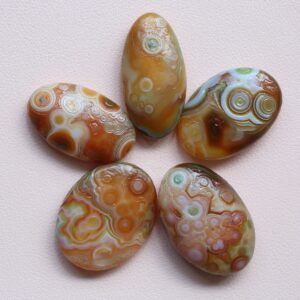Sand Casting Aluminium: Efficient, Scalable, and Reliable
In an era dominated by advanced technologies like 3D printing, CNC machining, and high-pressure die casting, it’s easy to overlook older manufacturing processes. But one method that has not only stood the test of time but also evolved alongside modern industry demands is sand casting — particularly when used with Aluminium.
Whether in railways, energy infrastructure, defense, or automotive sectors, sand casting aluminium remains a key production method for creating large, complex, and cost-efficient components. In this article, we explore what sand casting aluminium is, how it works, its advantages, applications, and how Indian manufacturers like Taural India are transforming traditional casting into a high-tech, globally competitive offering.
What is Sand Casting?
Sand casting is a metal casting process where a sand mold is used to form the desired shape of a metal component. The mold is made by compacting sand around a pattern (a replica of the final product). Once the pattern is removed, molten metal — in this case, Aluminium — is poured into the cavity. After cooling and solidifying, the sand mold is broken apart, revealing the final casting.
It’s one of the oldest manufacturing methods known, but modern sand casting involves a mix of traditional techniques and advanced technologies like:
-
CAD modeling
-
Casting simulation software
-
Modern alloys
-
Controlled cooling systems
This evolution makes sand casting suitable for high-performance industrial parts even in the most demanding sectors.
Why Use Aluminium for Sand Casting?
Aluminium is an ideal metal for sand casting, offering a powerful mix of mechanical and physical advantages:
-
Lightweight — Perfect for applications where reducing weight is critical (e.g., EVs, aerospace).
-
Corrosion Resistant — Naturally forms a protective oxide layer.
-
Good Thermal and Electrical Conductivity — Useful in power generation and distribution.
-
High Strength-to-Weight Ratio — Ideal for structural components.
-
Easily Machinable — Reduces downstream processing.
-
Recyclable — Environmentally friendly and cost-effective.
These features make aluminium a highly desirable choice for casting, especially when the parts need to be strong, light, and corrosion-resistant.
The Sand Casting Aluminium Process
Here’s a step-by-step breakdown of how Sand Casting aluminium works:
1. Pattern Creation
A physical model (pattern) of the desired part is created. This is typically made of wood, metal, or resin, and it’s used to form the shape of the mold.
2. Mold Making
The pattern is placed in a mold box, and special foundry sand is packed tightly around it. The sand mixture contains binders to help it hold its shape.
3. Core Insertion (if needed)
For hollow or complex internal geometries, sand cores are inserted into the mold before pouring.
4. Pouring
Molten Aluminium is heated to over 660°C (1220°F) and poured into the mold cavity.
5. Cooling
The metal is left to cool and solidify. The cooling time depends on the size and thickness of the casting.
6. Shakeout
Once cooled, the sand mold is broken apart to retrieve the casting.
7. Finishing
The casting is cleaned, trimmed, and machined to meet final specifications. It may also undergo heat treatment to enhance mechanical properties.
Benefits of Aluminium Sand Casting
1. Versatility in Size and Complexity
From parts weighing less than 1 kg to massive castings over 1000 kg, sand casting handles a wide size range — including parts with complex internal structures.
2. Cost-Effective Tooling
Tooling is inexpensive compared to other methods like die casting, making sand casting ideal for low to medium production volumes.
3. Design Flexibility
Engineers can easily tweak designs during prototyping or early production without high retooling costs.
4. Rapid Turnaround for Prototypes
Molds can be created quickly, making it an excellent method for R&D, pilot runs, and custom one-off parts.
5. Material Variety
In addition to aluminium, sand casting supports bronze, iron, magnesium, and steel — making it useful for multi-metal product development.
Limitations to Consider
While sand casting offers flexibility and affordability, it does have some trade-offs:
-
Surface Finish: Generally rougher than die casting. May require polishing or machining.
-
Dimensional Tolerances: Less accurate than high-pressure or investment casting methods.
-
Cycle Time: Slower due to the single-use mold nature of the process.
However, for the right application, these limitations are often minor compared to the benefits.
Applications Across Industries
Sand Casting Aluminium is used across a wide range of industries due to its flexibility, scalability, and mechanical performance.
Railways
-
Gear housings
-
Bogie brackets
-
Coupler components
Power & Energy
-
Transformer cases
-
Switchgear enclosures
-
Wind turbine parts
Defense
-
Shock-resistant housings
-
Lightweight brackets
-
Custom components for field equipment
Automotive & EVs
-
Engine mounts
-
EV motor supports
-
Prototype casings
Aerospace
-
Ground support equipment
-
Non-flight structural parts
-
Tooling components
Sand Casting in India: Taural India Leading the Way
India is becoming a key player in the global casting industry — thanks to a combination of cost competitiveness, skilled labor, and world-class facilities.
A standout example is Taural India, based in Pune. The company is a joint venture with Thoni Alutec (Europe) and focuses on large, complex sand castings aluminium for global and Indian clients.
What Sets Taural India Apart?
-
Castings up to 1000 kg
-
Full in-house capabilities: Design, simulation, casting, machining, and testing
-
Focus sectors: Rail, Energy, EVs, Aerospace, Defence
-
Advanced quality control with 3D scanning, CMMs, and X-ray testing
With a vertically integrated model and industry-leading equipment, Taural India is proving that traditional casting methods — when modernized — can compete on a global scale.
When Should You Choose Sand Casting?
Sand casting is the ideal choice when:
-
You need large and heavy parts.
-
Your project involves low to medium volumes.
-
Prototyping or frequent design changes are expected.
-
Cost-effectiveness is more important than ultra-tight tolerances.
-
Surface finish can be refined through secondary processes.
Conclusion
Sand Casting aluminium is far from obsolete. It’s a reliable, versatile, and economical process that continues to support critical industries around the world.
Whether you’re producing custom defense components, building infrastructure-grade housings, or developing next-gen EV prototypes, sand casting aluminium provides the performance and flexibility that modern manufacturing demands.
And with India-based leaders like Taural India pushing the envelope, the future of sand casting aluminium is not just strong — it’s smarter, faster, and more globally relevant than ever.












